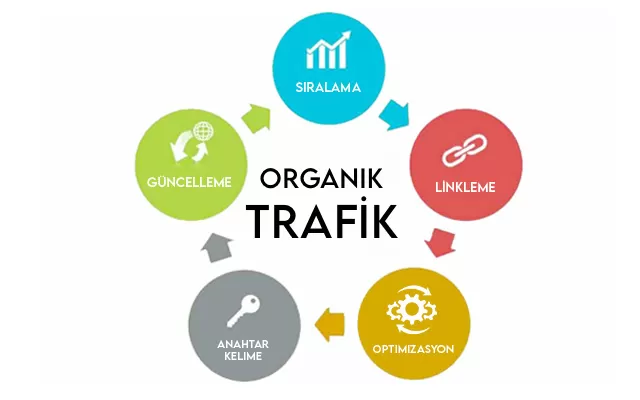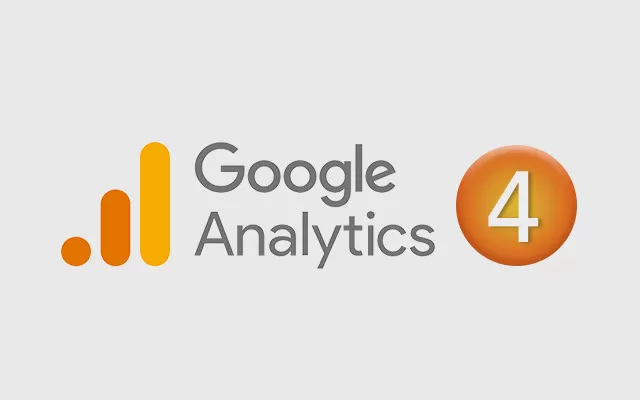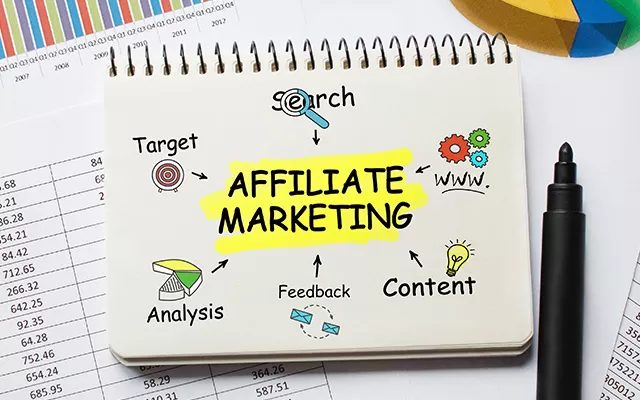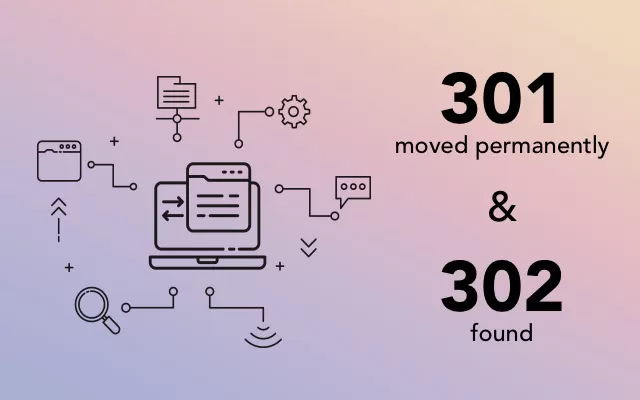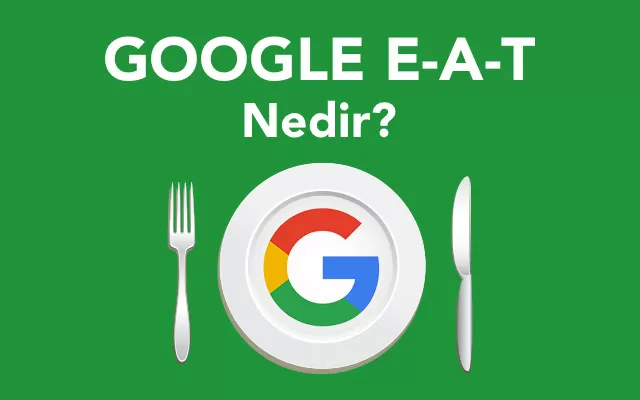SEO
SEO (Search Engine Optimization) is a set of marketing efforts to generate organic traffic and increase the visibility of websites in search results.
100+ Companies Trust Us for SEO!
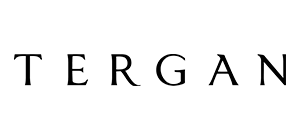
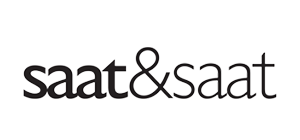


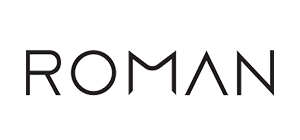
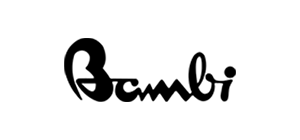
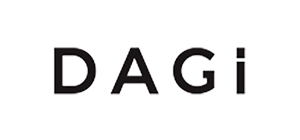
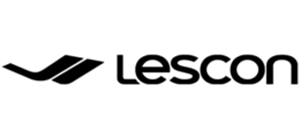

Be Visible!
Reach your potential customers with your content or products at any time of the year.
Add Value!
Make your brand valuable by ranking high in searches.
Save Money!
Reduce your advertising costs with Search Engine Optimization (SEO).
Increase Conversion!
Multiply your sales by increasing your user experience with a SEO compatible interface.
Where to Start SEO ?
What is needed for basic SEO is just a little time and patience. Brands usually work for keywords that are competitive. With a solid on-site optimization and off-site work for your brand, you can achieve success and increase your organic traffic. Businesses that take shortcuts may achieve short-term results, but they often fail in the long term and are very difficult to fix.
So, how do you go about optimizing your website? First you need to learn how search engines work and the various techniques needed for SEO.
To make it easier to navigate, we have organized each of the sections below into headings so that you can easily access the sections that interest you.
What Do We Do in SEO
?
What is needed for basic SEO is just a little time and patience. Brands usually work for keywords that are competitive. With a solid on-site optimization and off-site work for your brand, you can achieve success and increase your organic traffic. Businesses that take shortcuts may achieve short-term results, but they often fail in the long term and are very difficult to fix.
So, how do you go about optimizing your website? First you need to learn how search engines work and the various techniques needed for SEO.
To make it easier to navigate, we have organized each of the sections below into headings so that you can easily access the sections that interest you.
01 Software Optimization
02 Content Optimization
03 Off-site SEO Works
04 Measurement, Monitoring and Reporting
Some of the Tools We Use
Software Optimization
All pages of your existing site software are examined in detail, analyzed and reported to you whether they are suitable for search engines and user behavior. If you are using a ready-made e-commerce solution or content management system, the necessary updates in your software are performed by us in the relevant panels. Where necessary, appropriate software solutions developed within Mobitek are recommended.
Content Optimization
Your existing site content is analyzed in detail and reported to you. Our content that is not compatible with search engines is revised again and made compatible. The keywords that will bring visitors to your site are determined and your new page content is created with the words to be studied. If you are using a content management system, we will make the necessary updates.
Off-site SEO Studies
Off-site SEO studies include optimization studies that affect the authority of your website that may affect the ranking on search engine result pages. These are referral links to your site from different websites by creating links to your site, articles/news articles, mentions on social media and related topic reviews. As a result of the work to be done, the authority of your site in search engines is increased.
Measurement, Monitoring and Reporting
In all stages of SEO work, your site’s visitor traffic and visibility are tracked daily. Changes in rankings are analyzed and improvement efforts are made. Studies are updated and reported in detail to ensure traffic and transformation. Google Data Studio is used in the reports to be made. In reporting and measurement details, analytics and search console, which are also Google’s tools, are taken as reference.
Project Process
01
02
03
04
05
06
01
Keyword research is essential for any SEO effort and is an area where you should not take shortcuts and cut corners. You need to really understand how people search for your specific products, services or information. Lacking this knowledge, it will be difficult to structure your content so that your website has a chance of ranking for valuable search queries.
One of the biggest mistakes a webmaster can make is to focus on only going up for one or two keywords. Usually, there are high competition, high volume keywords that you think you need to move up for to be successful. These keywords tend to be one or two words long and there is a good chance that your competitors are working on the same keywords. These competitors make better long-term targets, but you still shouldn’t give up on optimizing for these words, but you can get the real benefit from long-tail keywords.
Long tail keywords account for the vast majority of all search volume. These keywords are more specific, longer phrases that someone would type in, such as “blue 8 cm high heel shoes”. Even though this word has a higher search volume, it will still rank better than “blue shoes”. Since these keywords are much more specific, such customers are also more likely to make purchases.
02
Conducting competitor analysis is a strategic way to optimize a website appropriately. This can help you identify areas not covered by your business website. The analysis will play a guiding role in keyword research and content development and improvements can be made accordingly.
Some tips for conducting competitor research for SEO:
- Architectural Flow: Look at the flow of your content on your competitor websites. Analyze how they are structured architecturally to get deeper into the site. A well-ranked website can provide some important clues that can make you decide to plan your website differently.
- Keyword Analysis: Use a tool like SEMRush or Ahrefs to view the keywords your competitors are using to rank. Determine whether you have any deficiencies as a result of the lists.
- Backlink Analysis: Similar to keyword analysis, you can also do this for backlinks. Backlinks are extremely important for search engines’ algorithms, so you can see where your competitors have backlinks. There are great tools like Ahrefs and Majestic that can help you find these backlinks.
03
Web siteniz sıralamada yükselmek konusuna zorluk çekiyorsa, işe bir SEO analizi ile başlamak isteyebilirsiniz. Web sitenizin eksikliklerini belirlemek için tam kapsamlı bir analize ihtiyacınız var.
04
On-site SEO is the process of optimizing the HTML code and the content of the website, as opposed to off-site SEO, which is about links and other external links that correspond to the website.
The goal behind on-site SEO is to make sure that search engines can find your content and that the content on web pages is optimized to rank for the relevant keywords you want to target. However, you have to do things the right way. Each page should have its own theme and you should do this optimization in the most appropriate way for a web page. If the keywords don’t match the theme of your product or service, you may need to create a different page just for a specific set of keywords.
If you optimize the header, description and subheadings while building the content appropriately, the end user will have a much better experience as they find the content they expect to find on your website. If you misrepresent the content in the title tag and description, your website’s bounce rates will increase because visitors don’t find what they expect.
There are a few key topics we’ll cover related to on-site optimization, including HTML coding, keyword research and content optimization. These are the main elements to pay attention to in order to rank higher in search engines.
05
Off Page SEO (also referred to as Off Page Seo) refers to optimization strategies that act outside of your website that can affect rankings on search engine results pages.
A large part of Google’s algorithm focuses on how the outside world (the entire internet network) sees the credibility of your website. You can have the best looking website with the most robust content, but if you don’t make the effort to get noticed, it will take a very long time for your website to get to a very good place.
Because Google’s algorithm is not human, it takes into account external signals such as links from other websites, mentions in articles/news articles, social media mentions, and related reviews and links to help determine the value of the information on your website.
06
Companies that have SEO work done need regular and transparent reporting in order to determine their strategies in the future and to be able to channelize to new targets.
Success Stories
Don’t waste time
Mobitek is an integrated SEO agency that produces data-driven digital marketing solutions in Turkey and around the world. With over 20 years of experience and expert staff, Mobitek provides performance and solution-oriented marketing services to brands.
What did they say about us?
"This is the 5th anniversary of our cooperation with Mobitek. year. I can say that the difference between where we started and where we are now has increased significantly in a positive direction. We can get support from experts in every subject we need. I have no doubt that we will expand our working areas with Mobitek and continue our cooperation for many years."

"We receive AdWords and Remarketing focused performance Marketing services from Mobitek. The summary of Mobitek for me is less talk and more work! When we started working together, they quickly reorganized our ad management and started to show high ROI. They enabled us to use the most up-to-date advertising models by closely following the innovations and implementing them quickly. We can easily communicate with their representatives and quickly implement a campaign. We are extremely happy with the service we received!"

"We receive AdWords and SEO focused performance marketing services from Mobitek. After we started working with Mobitek, we reached the right target audience in all advertising models in a very short time like 2.5 months. We have obtained many times more than the cost we spent for branding with Mobitek from full performance ads. In the field of SEO, we are now ranked 1st in many words, while we are not in our main category, underwear searches. Our organic traffic excluding the brand has increased by 300% and continues at the same growth momentum. We are now in a position to compete with all our competitors in the online channel. Thank you Mobitek!"

"Within the framework of our cooperation with Mobitek, we are very pleased with the value it adds to our e-commerce platform. They also supported us in increasing the marketing activities of our brand and reaching more accurate customers. We would like to thank Mobitek for their professional support and for being a reliable business partner."

"We receive consultancy services from Mobitek in the field of SEO and SEM. Before we started working with Mobitek, we were having difficulty in taking the right technological actions and achieving maximum ROI in our e-commerce activities. Shortly after working with Mobitek, our turnover in e-commerce increased by 40% and we started to achieve 2 times more efficient results than our ROI levels. Mobitek is one of the rare agencies that works with ROI-based model in the field of performance marketing and runs with you to your goals..."

Blog Mobitek
Up-to-date articles on SEO and performance advertising
Frequently Asked
Questions
The most curious things about digital marketing, SEO and online advertising
SEO is all the work that will enable you to rank high in the search engine in order to increase the amount and quality of traffic to your website as a result of organic search. The Turkish equivalent of this word, which is Search Engine Optimization in English, is Search Engine Optimization. SEO is divided into two groups as on-site and off-site work.
The aim of SEO is to increase the number of visitors by ranking the website higher in search engines in the specified keywords. In the search results, the fact that users generally prefer the sites that are in the first places in the search results increases the return and quality of the work to be done and enables us to achieve qualified conversion. For this reason, websites need to be more usable and able to respond more quickly to what visitors are looking for.
Today, search engines want to provide the best service for their users. For this reason, it takes care to provide its users with the most relevant content in line with their queries. Websites that perform optimization activities in accordance with more than 200 ranking factors offered by Google can be listed at the top of organic search results. With the on-site optimization and off-site work to be done, your site will be higher in the ranking results. However, it should not be forgotten that SEO is dynamic and involves constant development and change. Depending on the frequently changing search engine algorithms and ranking factors, SEO Service continues to improve itself day by day.
SEO, or search engine optimization, is a digital marketing strategy that focuses on helping websites rank high for relevant keywords in search engines, especially Google, and get more visitors. With SEO work, the necessary optimizations are applied on the website and the site is made suitable for the criteria set by search engines. The higher the site ranking you will achieve with the SEO work you will do, the more visible your business will be in search engines, and the traffic and conversion rate will increase accordingly.
Today, search engines want to provide the best service for their users, so they take care to provide their users with the most relevant content in line with their queries. Websites that perform their optimization efforts in accordance with more than 200 ranking factors offered by Google and successfully overcome the algorithms can be listed high in organic search results. However, it should not be forgotten that SEO is dynamic and involves constant development and change. Depending on the frequently changing search engine algorithms and ranking factors, SEO Service continues to improve itself day by day.
If your website is struggling to rank, you may want to start with an on-site SEO analysis. To identify the shortcomings of your website, you need a full analysis. Bu sayede eksiklikleri giderebilir, hataları düzeltebilir ve sitenize daha sağlam bir altyapı sağlayabilirsiniz. Böyle bir denetim, web sitenizi hedefli anahtar kelimeleriniz için sıralamayı engelleyen, site iç ve dış alanlardaki aksaklıkların veya eksikliklerin belirlenmesine yardımcı olabilir.
There are SEO scanning tools that can help you identify key technical issues quite easily, making the analysis process much more efficient. Bir web sitesinin sıralama yeteneğinde içeriği ve bağlantı profili de önemli bir rol oynar. Kaliteli içeriğe veya otoriter bağlantılara sahip değilseniz, oldukça rekabetçi arama sonuçlarında iyi bir sıralamaya sahip olmanız zor olacaktır. The software arrangements to be made together with in-site SEO analyzes will move your site to higher points in the ranking results.
Bir başlık etiketi (title tag), arama motoru sonuç sayfalarında (SERP’ler) bulunabilen tıklanabilir başlığı oluşturan etiket yapısıdır. Başlık etiketi, arama-tıklama oranı için son derece önemlidir. Arama yapan bir kullanıcının sayfanız hakkında okuyacağı ilk şeydir ve dikkatlerini çekmeleri ve sitenize tıklarlarsa aradıklarını bulmaları konusunda onları ikna etmek için çok az zamana sahipsinizdir.
Başlık etiketleri yazmak için bazı ipuçları:
- Başlık etiketleri, web sayfasının içeriğiyle alakalı anahtar kelimeler içermelidir.
- Önemli anahtar kelimeleri başta kullanmalısınız.
- Başlıkları 50-60 karakter uzunluğunda tutmaya çalışın. Google yaklaşık 600 piksel genişliğe yer veriyor ve burada 60 kelimelik bir başlık bu alanın %90’ına sığacaktır. 600 pikselin dışına taşan URL uzantıları olduğunda, Google kısaltılmış bir başlık gösterecektir ve başlığınız sizin amaçladığınız etkiye sahip olmama durumuyla karşı karşıya kalabilir.
- Mümkün olduğunca, başlığı geliştirmek için sıfatlar kullanın. Örnek: Kapsamlı SEO
- Başlığınızı anahtar kelimelerle doldurmayın. Spam olarak görünecek ve kullanıcıların tıklamaları daha az olacaktır.
- Çift başlıklı web sayfalarına sahip olmayın. Her sayfa kendi benzersiz içeriğini doğru bir şekilde tanımlamalıdır.
- Yeterli alan varsa, marka adınızı eklemeyi deneyin. Bu, marka bilinirliğini arttırmanın harika bir yolu olabilir. Zaten güçlü bir markanız varsa, bu, arama listenizdeki tıklama oranını arttıracaktır.
Meta description tag (a tag structure that describes the content of a web page to the searcher. Description can be found on search engine results pages (SERPs), below the title and URL of a search listing. Description is not a ranking criterion, but it plays an important role in SEO. If you provide a relevant, well-written, appropriate description, the click-through rate of search results will likely be higher. This will lead to a higher share of traffic and a potential improvement in search ranking, as click-through rate is a search ranking factor.
Some tips for writing description tags:
- Use keywords, but don’t fall into spam with them. Keywords within a search query are highlighted in the description.
- The length of the Description tag should be between 150 and 160 characters.
- Correctly describe the content of the web page. If people are misled, your bounce rate will be higher and potentially this can damage page position.
Meta keywords (keyword) tags are tag structures designed to direct search engines to the keywords that web pages are related to. In 2009, both Google and Yahoo announced that they were no longer using the keywords tag. In 2014, he announced that he did not use Bing either.
A heading tag is HTML code that specifies the level of importance of each heading on a web page. You can use 6 different titles from large to small: H1, H2, H3, H4, H5, H6. Generally, the name of an article, category, product or service is usually defined as H1, which is the most prominent and important heading. Headings play an important role in the optimization of a web page. For SEO purposes, you should only use one H1 tag, which indicates the main theme of the web page. All other subheadings should use heading tags H2-H6 depending on their level of importance. In terms of optimization, there is no problem in using more than one H2-H6 tag.
Google is urging webmasters to secure their websites so that searchers have a safer web experience. If users who search on Google trust the results displayed, they will be more likely to continue using the Google search engine in the future.
When potential customers purchase a product or service online, it is more likely and more reassuring for them to complete transactions if the site is secure and has an SSL certificate.
To encourage webmasters to secure their websites, Google has integrated SSL into its algorithm as an SEO factor. Websites with SSL certificates will have more advantages in search results than those without this certificate. Although having this certificate does not have a huge impact in terms of SEO, when combined with all other factors, it will allow you to take a step forward.
Link building is the process of acquiring links from other websites to your own site. Off-site link building is an important factor for increasing a website’s visibility on search engine results pages.
It is widely recognized that the number and quality of inbound links to a website and/or web page is the number one factor for SEO.
You must have a solid strategy to get quality links to your website. You can get links from quality websites with quality content.
Billions of searches are made on Google every day. So how does Google determine which pages are returned in response to what people search for?
Google returns pages with high-quality, relevant information relevant to the searcher’s query. Google’s algorithm determines relevance by crawling your website content and assessing whether it is relevant to what the searcher is looking for based on the keywords and other factors (known as ranking signals) it contains.
For a successful SEO strategy, you can divide SEO efforts into two groups:
On page SEO: All SEO strategies take place on your website. On page SEO is about creating content to improve your rankings. Including your targeted keywords in your pages and content, writing quality content on a regular basis, these factors as well as your meta tags and titles should be keyword rich and well written.
Off page SEO: All SEO strategies are the process of promoting your web page on different portals outside your website. Off page is an integral part of SEO success.
Both on page and off page SEO aim to make your site more friendly and trustworthy for users and search engines. Quality content created specifically for the targeted user increases your site traffic and contributes to your site authority.
In other words, SEO is about showing search engines that your content is the best result. To show its users the best, most relevant results.
Page Speed is a measure of how fast the content of a web page loads. Each of the pages on a website can have different speeds depending on the images or scripts contained in the page content.
Google has recognized page speed as a ranking factor for desktop searches since 2010 and for mobile searches since July 2018.
Why is Page Speed Optimization Important?
As a result of the tests, the difference between a 1-second web page load time and a 5-second page load time increases the probability of the user leaving the website by 90%. Therefore, page speed is an important ranking factor for both desktop and mobile.
How to Measure Page Speed?
PageSpeed Insights (PSI), one of the Google PageSpeed tools, reports on a page’s performance on both mobile and desktop devices, while also providing optimization recommendations. In doing so, PSI provides both laboratory and field data about a sheet. You can measure your page speed performance using PSI and other PageSpeed tools for the website you own or provide professional services for.
If you think your website needs page speed optimization, we have listed a few applications that will make a difference for you.
Page Speed Optimization:
- Enable file compression
- Minify CSS, Javascript and HTML
- Reduce page redirects
- Remove render-blocking JavaScript
- Remove browser cache
- Improving server response time
- CDN (Content Delivery Network) usage
- Visual optimization
Today, more than 60% of all search queries are made from mobile devices. For this reason, Google considers websites that improve their mobile usability to offer the best possible search experience more preferable.
Aramaların çoğunluğunun artık mobil tabanlı olduğundan, Google dizinlerini mobil öncelikli oluşturmaya başlamıştır. Through Search Console, Google informs site owners of the date their site will be indexed as mobile-first.
How to create a mobile-friendly web page?
There are a few things that can be done to have better mobile compatibility. The most common method is to create responsive designs (Responsive Web Design – RWD) that will adjust to the size of the browser. The other method is that sites have both different versions of the site according to the platform to be viewed and the servers recognize the device and present the relevant design to the user, but this method has been replaced by responsive designs since 2010.
Advantages of responsive design
- In responsive design, there is no need to maintain multiple pages for the same content.
- Common errors that affect mobile sites, such as blocking JavaScript, CSS and image files, are less likely to occur.
- Optimized for the devices users are currently using, the image does not need to be redirected, increasing loading speed.
- With responsive design, Googlebot will save resources when crawling the site, because instead of crawling several different times to get all versions of the content, for responsive web design pages, your page only needs to be crawled once.
Structured data is a standardized format used to help search engines better understand the content on your website and was created in collaboration with Schema.org, Google, Bing, Yandex and Yahoo.
While there is no conclusive evidence that structured data can improve your search rankings, it is possible that it can help increase click-through rate. This is because structured data is included by Google in specialized search results. For example, a recipe page with structured data can be displayed as graphical data in search results, which can positively contribute to the likelihood of users interacting with the web page.
- Content Map (Preferred to show the position of the page in the site hierarchy.)
- Tape (It is preferred to be used in combination with data such as recipes, courses, restaurants, etc.)
- Event (Preferred for listing events such as concerts or art festivals)
- Fact Check (highlights a credible site’s assessment of a claim.)
- FAQ (Lists questions and answers related to a specific topic.)
- Job Postings (Preferred to be included in Google job postings)
- Local Business (Includes information such as opening hours, points, directions, etc.)
- Estimated Salary (Includes information about salary ranges according to job type and location)
- Video (Provides options for specifying video segments and live playback)
Mobil sayfaların yüklenme hızı da SEO açısından önemlidir. Google started to support the Accelerated Mobile Pages (AMP) project in 2015 and started to integrate AMP listings into mobile search results in 2016.
AMP vs Responsive Design
AMP and responsive design have different advantages and disadvantages. RWD is designed to provide an optimal user experience, while AMP is designed for fast loading pages without losing page layout. A choice between AMP and RWD can be made according to requirements.
URLs are the first thing a searcher will see, and from a user experience perspective, it is important to choose URL structures that are simple, easy to read, and appropriate to the site hierarchy. URL structures also have the ability to affect the search ranking of your website. We can list some points to be considered in this direction as follows:
- Ensure Keyword Usage in the URL: It is good practice to include keywords in the URL as long as they accurately represent the content of the page. This will give the search user additional confidence that the page contains the content they are looking for and also reinforces important keywords to search engines. If we look at our blue shoes example, an SEO-friendly URL looks like this: “/blue-shoes/”
- Don’t Stuff Page URLs with Keywords: Sometimes stuffing the URL with too many keywords can cause harm while expecting benefit. When over-optimized, search users may think they are encountering a spammy-looking URL, and this may even be perceived negatively by the search engine. A keyword-populated URL looks like this: “/shoes/blue-suits/blue-suits/blue-suede/best-blue-suede-suits/”
- Pay Attention to URL Length: Try to keep your URL length to a minimum. Google shortens URLs that are too long and can affect your click-through rate.
- Avoid Dynamic URL Lines: Whenever possible, try to specify a static URL with keywords versus a dynamic URL with symbols and numbers. A dynamic URL would look like this: “/cat/?P=3487”
To understand the importance of on-site linking, we need to talk about the concept of “link juice”. Link juice is the authority or value transferred from one web page to another or from one website to another through linking. So every link, on or off-site, has a specific value that is transferred.
When you create content for your website, it will be beneficial in many ways to investigate whether there are other web pages on your site that are suitable for linking to this content, and if so, to link to them. This work will support the flow of “link juice” and at the same time provide users with access to other relevant information on your website, hence ease of use. This work can also be applied off-site to transfer value from other websites.
Off-site SEO is defined as activities carried out outside the website in order to increase the ranking of a website in search engines. Although backlinks usually come to mind when it comes to off-site SEO, it also includes many factors such as content marketing, podcasts, social media, Youtube SEO work.
Off-site SEO is the first method to increase your power after a successful on-site work, to show your presence through other platforms and to increase your competitiveness. When it comes to off-site SEO, the first thing that comes to mind is backlinks, which are links from one website page to another website. These links signal to search engines that your content is valuable and credible. You can increase your chances of ranking high in competitive search terms with backlinks from reliable, relevant, high-quality sites, but you should not forget that off-site SEO is not just about backlinks and you should create strategies for other off-site factors. For detailed information about off-site SEO and how to create your off-site SEO strategies, see What is Off-Site SEO? How is it done? You can reach from our content.
Another factor that search engines take into account is the location where the link is placed. This plays a decisive role in how much weight or “link juice” is gained from the website that links to your website. Due to the abuse associated with link selling websites in the past, footer and sidebar links no longer carry as much weight as they once did.
Links in the body or content of the web page are usually of greater importance and are given more weight. It is also widely recognized that the more important the link is within the content, the more weight and authority it will have.
Content Optimization: The most important SEO factor for a website is undoubtedly content. The content on a page has the most important say on the position of that page in search results. You should provide users with the most relevant, useful, quality and original content for their query, in other words, you should have great content based on the saying “content is king”. You should not act with the misconception that content is just an article to be added to your site, SEO content can come in the form of any of the following types;
Product Pages,
- Category Pages,
- Blog Posts,
- Articles,
- Guidelines
- Videos,
- Dictionaries
- Infographics
Poor quality content that you create haphazardly can bring more harm than good to your site, causing your site to receive weak or duplicate content penalties. At the same time, if your content does not contain information that will benefit the reader, you will lose your target customers. Therefore, it is important to be able to consistently write SEO-friendly content that people will enjoy reading. To improve your SEO content strategy and achieve high quality content;
- Define your area of expertise, in order to stand out from the hundreds of companies you compete with in the same sector, you must first narrow down your target and identify a niche topic related to your area of expertise.
- Define the target audience, who is my customer? Give an answer to the question. Clarify the profile of your existing customers you serve.
- Set the goals of your SEO strategy, create a list of objectives to build a solid SEO strategy. The achievement of the goals you set will reveal the success of your plans at the end of the SEO work.
- Perform keyword research, perhaps the most important part of content optimization, keyword analysis. Identify your niche keywords and focus on them in your content. You can find detailed information about keyword analysis in our article.
- Create high quality content, put all the components together and start creating your SEO compliant quality content.
Anchor text is clickable highlighted hyperlink text that directs a user to a different web page on a web page. How websites link to you makes a difference in search engine algorithms, and anchor text is part of that equation. Search engines consider text as a sign of a web page’s relevance to specific search phrases.
For example, linking to a fashion blog with the anchor text “Blue Shoes” indicates to search engines that your website should be relevant to “blue shoes”.
In the past, the more links you had to your website that contained certain keywords, the more likely you were to rank higher for that keyword. It still has a certain amount of impact, but having a high percentage of your links containing keywords will raise suspicion among search engines that you are taking action to change the results.
A natural anchor profile usually includes a mix of anchor text variations with anchor text variations that link together a text containing the brand name of a website.

